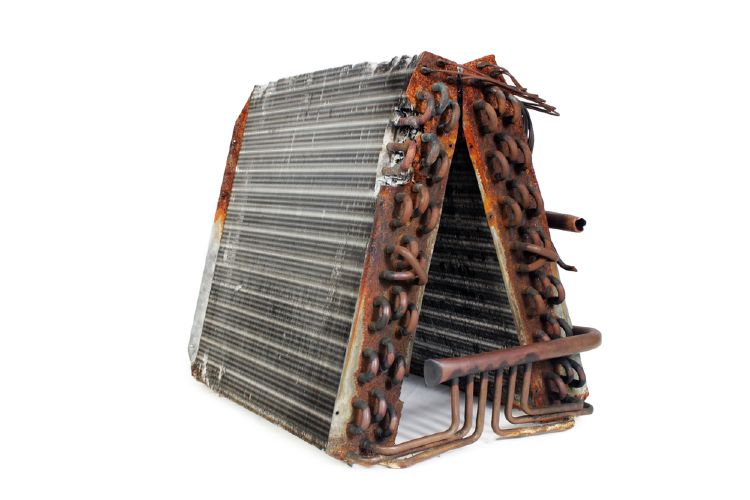Your coil drain pan provides a necessary service for the rest of your air conditioning system. Without it, the condensation that forms on the outside of your evaporator coil would drip out onto the floor, creating a puddle during peak periods of AC usage. However, nothing lasts forever, and a coil drain pan is no exception. It is not uncommon for AC owners who have had their systems for years to discover cracks, holes or other problems with their drain pans that can render it all but useless. Fortunately, you can prolong the life of your coil drain pan by learning more about it. In this guide, we’ll teach you how to care for a coil drain pan so that it lasts for as long as possible and provides you with consistent service.
Where is a Coil Drain Pan on a Standard Home Air Conditioner?
One of the first things you should know about a coil drain pan is where you can find it on your typical HVAC system. The trick to finding your drain pan is to locate your evaporator coils. Evaporator coils will be part of your indoor unit, which is typically in the basement or attic of many homes. In most cases, the indoor unit of an HVAC will be in a section of the furnace just above the combustion chamber and blower. Once you find the evaporator coils, just look beneath them, and you should be able to locate the drain pan without much trouble.

What Can Cause Problems with a Coil Drain Pan?
A coil drain pan may be affected by any of the following conditions. Learn the following signs of trouble and keep a careful eye out for them so that you can avoid drain pan trouble in future.

- Clogs in the condensate drain. Your coil drain is in a pretty remote area, but the dust that makes its way into your ducts may still reach it. When enough dust manages to settle in your drain pan, it can congeal into a sludgy mass that backs up your condensate drain. At this point, your drain pan may overflow, causing water to spill out of your indoor unit and across the floor. To prevent a flood in the room where your indoor unit is kept and avoid potential damage to other systems, ensure that you regularly check the drain and pan for clogs. It is also advisable to arrange for regular professional maintenance on your system from a licensed technician who can clean the ducts properly and prevent them from becoming too dusty in the first place.
- Rust. Depending on the material from which your drain pan is made and the amount of time water is allowed to pool in it, it may eventually rust. Drain pans compromised by rust are uncommon, but not impossible. If a hole rusts through the bottom of your drain pan, the water will simply pool below your indoor unit. Avoid this outcome by checking your drain pan every year or so and replacing it whenever you notice it starting to rust.
- Pest problems. Dust is not the only thing that can cause a blockage in the drain and eventually cause the drain pan overflow. It is also possible for insects, rodents, or other small animals to cause clogs in the drain line, causing the same problems as dust. Regular duct cleaning will ensure that the ducts do not become potential homes for unwanted animals and reduce the likelihood that one will find its way into your drain line and become lodged there.
- Other impact damage or wear and tear. You probably don’t handle the drain pan very often, but when you do be sure to take diligent care of it. If you drop or crack the drain pan while handling it, be sure to replace it right away instead of putting it back in your system. In fact, the same should be said of practically any component in your HVAC system—each one exists for a reason, and it is always better to replace a questionable part than to risk the health of the entire system on the hope that it will hold out.
- Mold. If any of the above problems cause water leakage through or around your drain pan, you may experience other issues. One of the least desirable things that can occur as the result of improper pan maintenance is mold growing in places near the indoor unit. Protect walls, alcoves, and crevasses—do not allow your drain pan to go unchecked.
The best way to ensure a strong drain pan is to check it often, handle it carefully, and arrange for regular duct cleaning by a licensed pro so that the pan won’t be affected by foreign materials in it. Follow those steps, and you should have no trouble keeping a coil drain pan safe.
Check with us here at Valley Comfort Heating and Air, our customers love our attention to detail and our friendly, affordable service. (707) 539-4533


